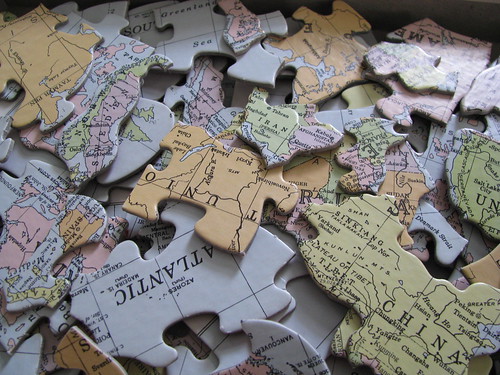
So, let’s just assume that you’ve gone to the effort to type the answers to all fifty, or at least most, of the worldbuilding questions from yesterday’s post. (Even if you haven’t, keep reading. This may be useful anyway.) What next?
You have a bunch of information now, and hopefully a map and maybe even a timeline, but how do you go from this to a fully-fleshed out story world?
What I did, after I answered all hundred billion of Patricia C. Wrede’s questions, was to compile the answers into a paragraph-form article, roughly resembling a Wikipedia entry.
You may be asking, what is the benefit of doing this? Can’t I just refer to the answers I typed up? You probably could, but for me, writing up these articles for my story world allowed me to expand on the information in the answers. It also allowed me to draw connections between different answers. Finally, I just think better when I’m presented with or creating a coherent block of text.
Best of all, it gives me an organized series of references to come back to again and again while drafting and revising. If I forget what the warrior salute of Iskalon was, or the name of that King who founded Chraun, I have an easy way to recall it. When you’re writing a contemporary novel, you’ll have a series of resources to draw information from; books, articles, encyclopedias, etc. When you’re building a world, you have to create your own articles to research from.
Articles are not the only way to do this. They’re just the way that is most comfortable to me. Perhaps you’d rather see the information organized on a spreadsheet somehow, or maybe lists are your thing. Or maybe you want to put it in a form where you can incorporate it into the actual book, like by writing a historical text written by a character in your story world, or a code of ethics that the characters follow, or sections of a story-world book that instructs your wizards in their magic. Or perhaps you are so deeply intimate with your story-world that you don’t need a written record, but can simply call it up from memory while drafting. That’s ok too. I found that at a certain point, I was referring to my articles less and less. The story is part of me now.
But for most of us, at least at first, taking the answers to the questions and organizing them into an accessible format is a crucial part of the world-building process. Not only for the sake of giving yourself a reference, but to allow the answers to live, to become more than just answers to questions.
My final bit of advice on this topic is to let whatever documents you compile evolve while you are drafting and revising. Update them as changes become apparent. Perhaps you find that it doesn’t actually make sense for your herdsmen to raise sheep in a hot climate. Actually, they are going to raise fish in caves. That’s ok. None of this is set in stone until you publish a book; at that point, you will have to keep things consistent to avoid confusing your readers, but up until then, the story-world is clay for you to sculpt.
Tomorrow: 101 TIWIK #36: Fun with Names
This post is part of a series of 101 Things I Wish I’d Known Before I Wrote My First Book. Start reading the series at the beginning.
If you’re enjoying this series, please sign up for my email newsletter for a monthly update on appearances, book releases, giveaways, special deals, and a blog round-up!


One thought on “101 TIWIK #35: Worldbuilding III: Putting Together the Pieces”